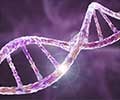A research conducted by Philip M. Murphy, say that mutation in CCR5 (cell surface protein) protects people against HIV infection but increases the risk of developing West Nile virus (WNV) illness
A research conducted by Philip M. Murphy, M.D., and colleagues say that mutation in CCR5 (cell surface protein) protects people against HIV infection but increases the risk of developing West Nile virus (WNV) illness.
West Nile virus (WNV) illness is caused due to a mosquito-borne virus. This research as conducted at the National Institute of Allergy and Infectious Diseases (NIAID) and the results of the research appear in The Journal of Experimental Medicine.The research is very useful to all the doctors who treat the HIV patient using experimental CCR5-blocking drugs, as this might increase the risk of developing West Nile virus (WNV) illness.
The National Institute of Health (NIH) director Elias A. Zerhouni, M.D said that CCR5 was the first genetic risk factor to be identified for West Nile virus infection. This infection leads to complicated problems and the death rate in US is about 102 in 2005.
Ten years back it was identified that CCR5 is the primary co-receptor employed by HIV to infect cells. This led to the development of CCR5-blocking drugs to prevent the spread of HIV from one cell to another.
CCR5 receptor gene is inherited one from the mother and the other from the father. But in case of 1% of North American whites there is a mutation in both copies (are homozygous) of the gene and hence they don’t produce the CCR5 protein. These individuals don’t suffer from HIV infection but are prone to WNV illness.
The researchers developed a mouse model to understand the functioning of the immune system cells. They found that genetically engineered mice that lacked CCR5 receptors suffered from the WNV illness. The normal mice were protected from the symptoms of WNV illness due to the movement of immune cells into the brain and central nervous system.
Advertisements
In case of the WNV-positive samples from Colorado 4.1% of 148 samples came from individuals who had gene mutation on both the copies. Among the Coloradans who were WNV-positive and who self-reported their race as white, the percentage of homozygous individuals was 8.3.
Advertisements











